How to go hiking with the little ones? 7 tips from a new parent
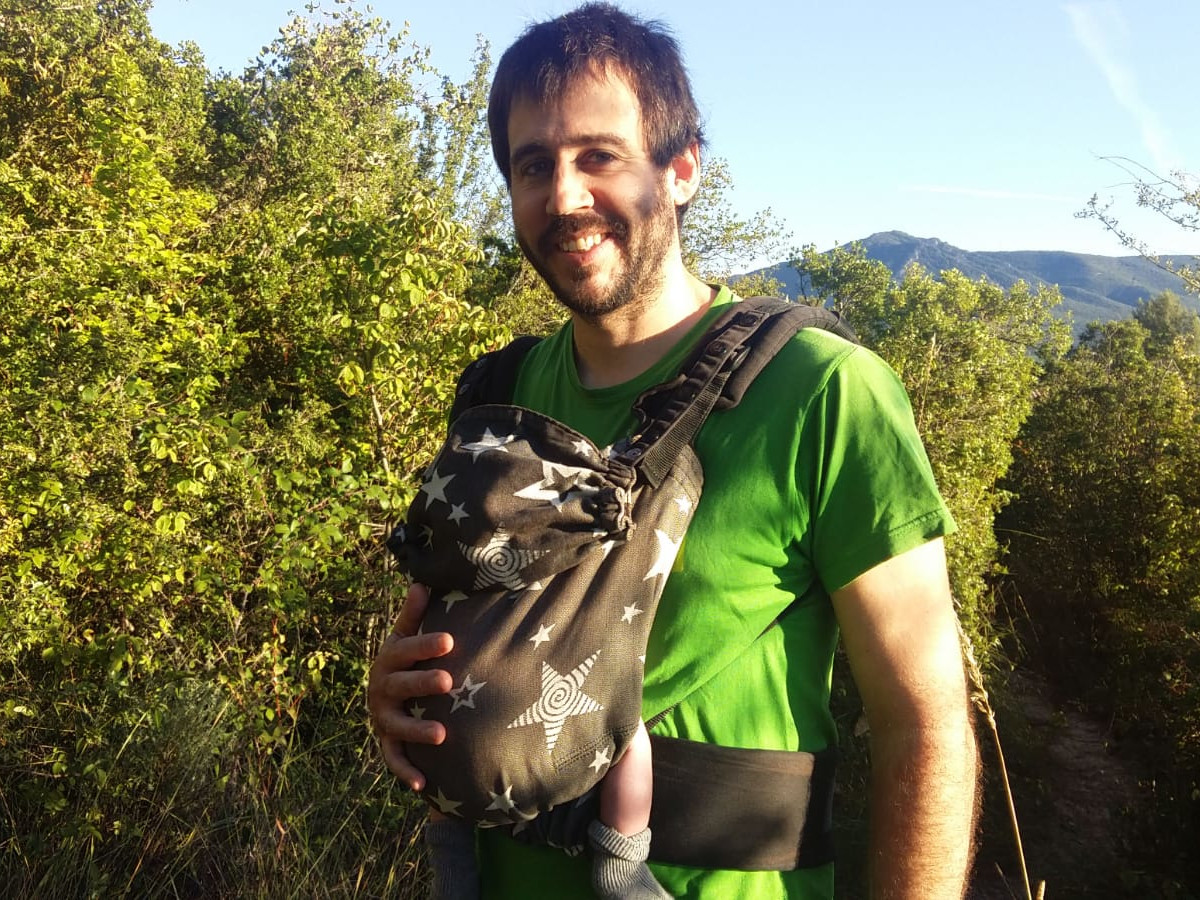
Gari is now 8 months old. Since his first weeks he has been stimulated by the fresh air, the freshness on his face, the colours, he has discovered new smells. You would see a surprised look on his face when you brought him close to a colourful flower. Now that he is starting to become more aware of things, everything green around him is like a magnet, and although he doesn't have much independence when he is in the baby carrier, if you are careless he is picking up a leaf and putting it in his mouth. When he slides his little hand over the roughness of a rock, he discovers new textures. What an adventurous terrain for him. He won't remember it, but something will remain in that little person.
I have always gone to the mountains and I don't want this new stage to change that. If nature and the outdoors have great benefits for our body and mind, why not share it with the family. I think I can already speak from experience when it comes to hiking with babies. The next stages will come, and this article will add more anecdotes and will speak more from experience, each time I rewrite it. At the moment, I have had to get information for the stages that will come, when Gari is 2, 4, 10 years old. I have asked, I have read, what to take into account to enjoy a day outdoors or to go on a hiking route with children. All parents agree on one thing: hiking with children has its challenges. It has nothing to do with going with a group of friends or with your partner. But it's not mission impossible and what can you say: something better than trying to share your passion (which you think has given you so much) with your little ones.
I leave you with this particular guide to enjoying the outdoors and its benefits with the little ones. As I was saying, it will evolve and grow in first-hand advice, tips, tricks and anecdotes as this new father walks the trails with his family.
What do I need for hiking with children? You need a lot of things: from good clothing, to a "first aid kit" and even a large dose of imagination. I'll give you a "mix" of good advice. Of course, you know your little one better than anyone else and you can find out what else is essential for them. Let your maternal or paternal instinct guide you.
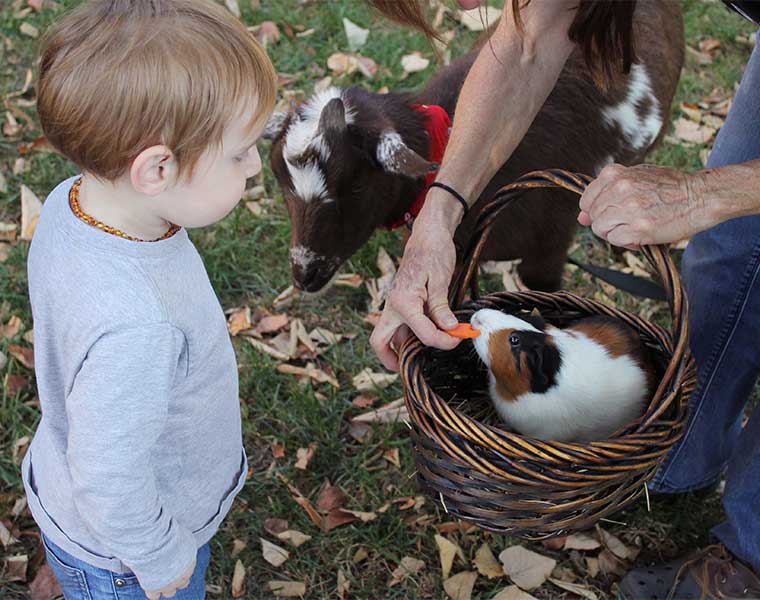
It all starts with a step: hiking with babies
Gari walks the paths by the side of the house like a champion. He is in his rucksack, huddled against my body, as if hypnotised by a new world opening up before his eyes. At times he is asleep, at times awake but engrossed by the new world before him, at times he seems to wake up from it all and turns around, moving, wanting to touch everything that comes within his field of action. As I said at the beginning of this article, I believe that going for a walk in the bush at this age can be very positive.
If your child is between zero and twelve months old, it will be essential to go with a baby carrier or baby backpack. It is very important to have one so that you can move around with it without any problems. It is also essential that you wear suitable footwear and walk at a moderate pace to avoid any kind of mishap on the route. Don't get into technical, complicated or slippery terrain. Also take into account the weather conditions that you are going to have throughout the day. Think about the fragility of your baby and what you will do if it starts to pour in the middle of the hike. This is not an option. (YOU MAY BE INTERESTED: How to choose a baby carrier)
In the first months of your baby's life you will be able to use a ergonomic baby carrier, "kangaroo" type baby carrier ("type" go in front). The baby is snuggled up against your body, in a position that will remind him of those 9 months in his mother's belly. I will never tire of saying it, as if in another dimension, he is "hypnotised", perhaps in that memory of the aquatic environment that accompanied him during those months. The position of the baby's body is important, we will turn the baby's "little bottom" towards us, to place it in the "froggy" position. From the front, we will see how his legs and bottom make an "M" shape. This type of baby carriers have straps to adapt the baby's body to the best ergonomics and position. My experience is with a Kokadi backpack and I see how Gari goes in a natural position.
When the baby is able to sit up, we can also switch to another type of baby carrier: baby carrier with frame. The pieces of this type hold the baby on the back. The best thing to do is to consult your paediatrician about the right time to use these carriers. In general, by six months babies usually have good neck and shoulder control and can sit upright. However, the advice of the paediatrician is recommended, as not all babies are at the same stage of development. We are now 8 months old and we are going to make the transition to this type of carrier, we already have one that I think is going to be a great help when we go out in the mountains. Deuter kid comfort.
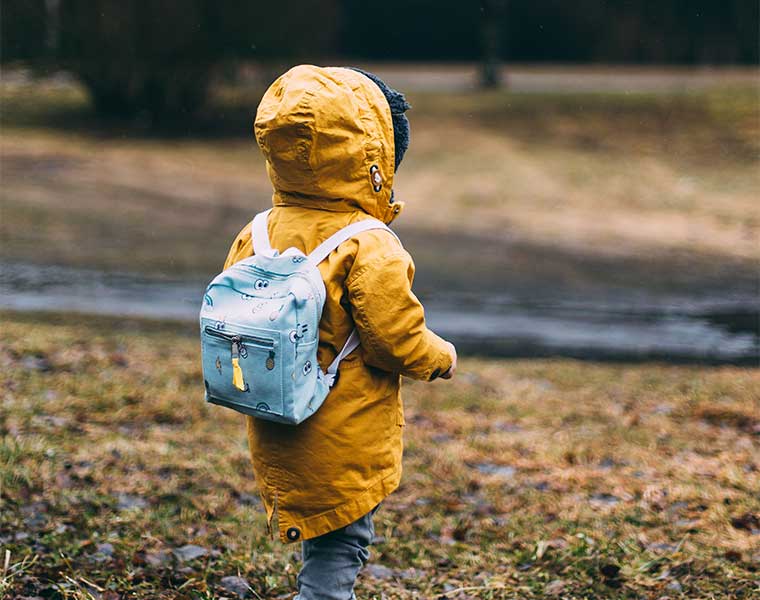
From small to large
When they are small, from one to three years old, it is a perfect phase, as this is when they want to walk the most. They are developing this skill and want to put it into practice. You can do the route also carrying a trolley or a rucksack, in case they get tired on the way, so that you can combine walking with carrying them on your parents' shoulders or in the pushchair. If we are thinking of a route along trails, we will have to choose to carry a backpack, if our excursion is along a greenway or a track with a good surface, we can take a stroller. Remember to take a spare pair of clothes, an extra pair of socks as puddles tend to attract a lot of attention and prepare an extra pair of socks for your child. backpack for the little one. As you know, they like to have their own things and carry their own belongings.
When they have grown up (5-12 years old) their needs change. This age is much easier when it comes to hiking, although we recommend that you establish certain rules for them. For example: that they should not go far away and always be in sight of mum and dad, or that they can walk for a long distance and then stop to rest until the family is visible to them again.
Check and double-check that you have everything you need.
I still remember the first day we ventured out on a trip. We were loaded to the brim with things we never got to use. However, don't forget the essentials. Experience will teach you what you can do without and what your essential kit is when you go hiking with the little ones. This will vary depending on the age of the children and the type of excursion you are going on.
Before you set off on your "excursion" you should research what the weather will be like. Knowing the weather conditions is essential. Children get cold much faster than adults, so be especially careful with them and keep them a bit warmer.
Also, bear in mind that they can get wet or dirty. Take a spare set of clothes and some extra warm clothes in case you get cold. This in case you are hiking with children in winter. In summer take hydration and spare clothes in case they get wet or swim somewhere.
It all starts with having a dry, warm and fed little one. A seemingly perfect place becomes a miserable place when their most basic needs are not met -I can vouch for that-. And, having said that, beyond the above, let's look at some more specific tips for each age group. It is not the same to do a route with a 7 year old child as with a 6 month old baby.
Get them to enjoy the route from minute 1.
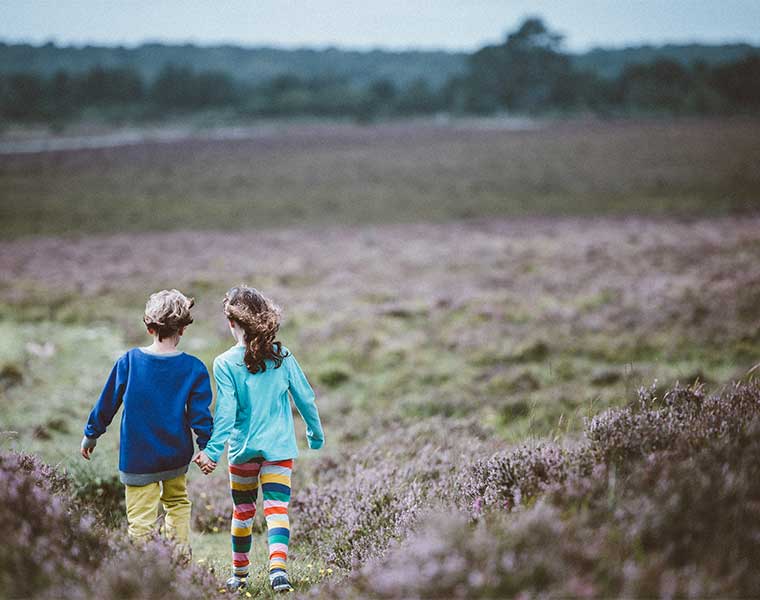
We tend to make a big mistake when we travel with children and that is to understand the trip as if it were an adult one. We (adults) usually go hiking for a purpose (for example, to see a landscape, the lake at the end of the trail or enjoy a waterfall) but with children we cannot go with that intention; as the experience for them will probably not be as positive.
The hiking route it must be an adventure from the beginning and not only at the end. In other words, the destination is not the important thing. To achieve this you can do many things: from playing along the way (the typical game of "I see I see" can be useful) or you can also try to listen to what the birds are saying. You can make up a tune to what they are chirping, for example. Also, remember that breaks are essential so as not to cause fatigue in them.
And we also recommend that you choose a first excursion that is not too difficult. Even though children are full of energy, if you take them over hills and rocky paths, they will probably get tired earlier than expected.
Surprise your child
What does a child usually think of his or her mother or father? That he is an expert in everything, that he is the best and that he is a superhero. So, we suggest that you go out and learn about things that you might come across during the excursion. For example, study the fauna and flora to talk to him about the plants around and tell him what they are used for (natural remedies) or do some research about the animals that are hidden very close to you. It can be exciting for them to think that they might meet one along the way.
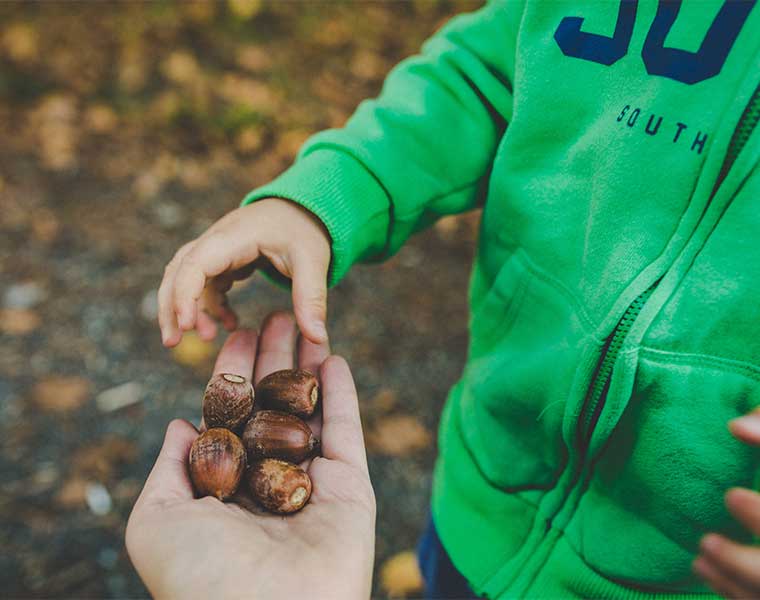
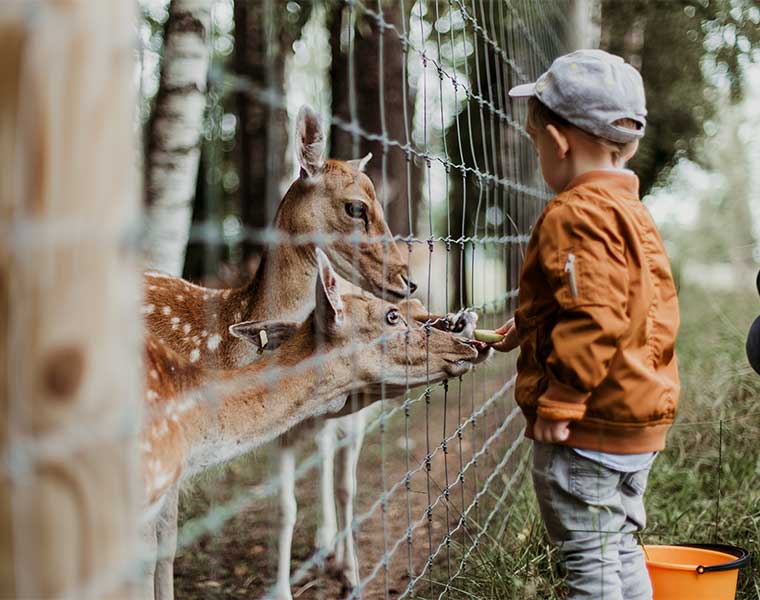
Patience and flexibility
Bear in mind that you are travelling with children, you must be patient and flexible. It is normal for them to stop to see anything that catches their attention or to be entertained along the way. You should approach the hiking route as a kind of educational journey that your little one will discover; and you should let them do it so that they enjoy it.
For example, if you are doing a route through an area with waterfalls and rivers, you should be aware that children are often fascinated by water and are therefore likely to be more entertained and make more stops. You should also be patient if they ask a lot of questions about an animal or plant. This is normal.
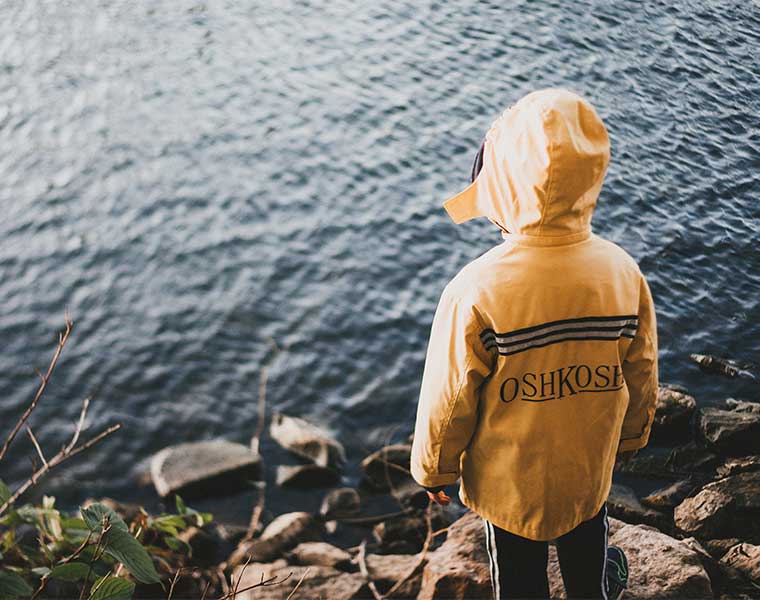
Go out often to enjoy nature
A walk in nature is a balm for the soul. If your child is a "whirlwind", walking and running around in the woods is sure to soothe him or her (and if not, it will tire him or her out, which is a sure way to make him or her sleep like a log). Repeat the outings, make it part of their routine. You know how important this will be for them. Take advantage of these outings to educate them both environmentally and in respect for what they see and learn on these adventures. If you are lucky, when they grow up, they will ask you to go out more and more, and who knows, maybe when they become good mountaineers, they will take you with them.
Don't miss any adventure in the Pyrenees!
